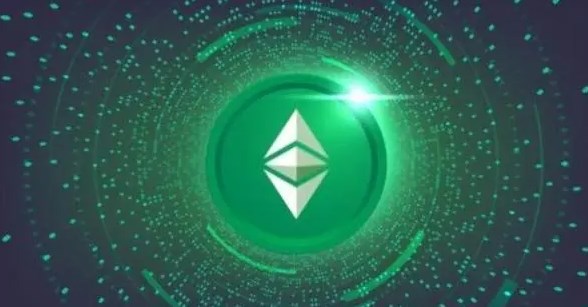What currency is ETC? One article comprehensively introduces the ETC coin project
- WBOYWBOYWBOYWBOYWBOYWBOYWBOYWBOYWBOYWBOYWBOYWBOYWBOriginal
- 2024-08-01 16:34:02568browse
Ethereum Classic (ETC) is a cryptocurrency that was generated by the hard fork of the Ethereum blockchain in 2016. Its features include: proof-of-work consensus mechanism, 13-second block time, low transaction fees, mainly Used as a store of value and medium of exchange, and supports decentralized applications, smart contracts, and mining.

What is ETC coin?
Ethereum Classic (ETC) is a cryptocurrency that was forked from the original version of the Ethereum blockchain.
Comprehensive introduction to the ETC coin project
Historical origins
- 2016 hard fork: The Ethereum blockchain underwent a hard fork due to The DAO hacker incident, and was divided into Ethereum (ETH) and Ethereum Classic (ETC) two chains.
- The DAO hacking incident: In this incident, a decentralized autonomous organization called The DAO was hacked, resulting in a large number of Ethereum coins being stolen.
- Fork decision: In order to restore the state of the blockchain before the hack, Ethereum performed a hard fork, creating a new network (ETH) and retaining the original network (ETC).
Technical Features
- Consensus Mechanism: ETC uses the Proof of Work (PoW) consensus mechanism, which requires miners to contribute computing power to verify transactions.
- Block Time: ETC block time is about 13 seconds, which is slightly slower than ETH’s 12 seconds.
- Block size: ETC’s block size is 2 MB, which is larger than ETH’s 1 MB.
- Gas Fees: ETC’s transaction fees are generally lower than those of ETH.
Application scenarios
ETC is mainly used as a value store and transaction medium. It is also used in the following applications:
- Decentralized Applications (dApps): ETC supports building dApps based on its blockchain.
- Smart Contracts: ETC allows the creation and execution of smart contracts.
- Mining: Individuals or mining pools can mine ETC by contributing computing power.
Advantages
- Stability: ETC’s blockchain is stable and has not experienced major failures since the fork.
- Low transaction costs: ETC’s transaction fees are generally lower than other cryptocurrencies.
- Community Support: ETC has an active community including miners, developers and users.
Limitations
- Technologically backward: ETC’s technology is not as advanced as ETH and lacks some of the functions of ETH.
- Slow transaction speed: Compared to ETH, ETC’s transaction speed is slow.
- Limited application scenarios: ETC has fewer application scenarios than ETH.
Ethereum Classic Latest Price and Trends
As of now, the price of Ethereum Classic (ETC) is $21.93 with a 24-hour trading volume of $1.193 billion.
Recent Changes
The price of ETC fell by 1.81% in the past 24 hours. This was largely due to a pullback in the broader cryptocurrency market, with major cryptocurrency Bitcoin (BTC) also falling.
Influencing Factors
Factors affecting ETC price fluctuations include:
- General sentiment across the cryptocurrency market
- Specific technical and fundamental news
- Changes in the regulatory environment
- Activity of speculators and traders
Future Outlook
In the short term, ETC prices are likely to continue to be affected by the volatility of the cryptocurrency market. However, in the long term, it may benefit from the potential application and adoption of blockchain technology.
It is recommended
- to conduct your own research before investing in any cryptocurrency.
- Manage risk carefully and only invest money you are willing to lose.
- Consider holding ETC for long-term appreciation rather than short-term trading.
Short-term outlook
ETC prices are expected to remain volatile in the short term, but may rebound as market sentiment improves.
Indicators
- Current price: 21.93 USD
- 24-hour trading volume: 1.193 billion USD
- Circulating market capitalization: 3.249 billion USD
- Circulating supply: 148.14 million
- Maximum supply: 210.7 million
- Total Supply: 148.14 million
The above is the detailed content of What currency is ETC? One article comprehensively introduces the ETC coin project. For more information, please follow other related articles on the PHP Chinese website!

